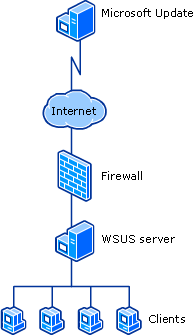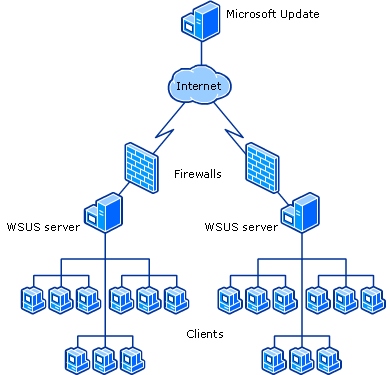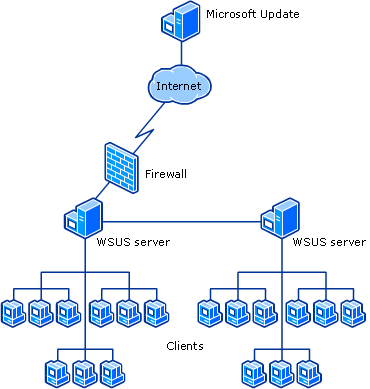An enterprise environment is totally different from the conventional consumer experience. You, as a Server Administrator need to put some additional walls to filter the content and updates that reach out to the devices in your organization. Administrators use Windows Server Update Services (WSUS) to download updates and apply them to several organizational devices after thorough testing and deep evaluation. In this post, we will discuss on how to use Windows Server Update Services in an Enterprise environment.
Windows Server Update Services in Enterprise environment
Any WSUS server will download several updates pertaining to Windows services, components, and apps like Microsoft Office and SQL Server. Administrators need to be picky while deploying these updates to other desktop clients in the organizational network. All these updates need to be tested and evaluated on the basis of certain standards before approving them for distribution among lower-level devices.
Deployment Scenarios
WSUS has several flexible deployment scenarios where it can be used for varieties of Organizations from a small-scale industry with dial-up connectivity to considerable large-scale businesses which has a multitude of users distributed across numerous sites.
In a single WSUS Server scenario, administrators can set up a single WSUS server inside their corporate firewall which summons updates directly from Microsoft servers and then acts as a distribution server to the other client computers at the organizational level.

A considerably large organization is likely to maintain multiple WSUS servers. Additionally, you can also configure how many servers should be allowed to connect to Microsoft Update servers, based on which different roles can be assigned to individual WSUS servers. If you have a number of WSUS servers that are being managed independently and each server independently synchronizes its content from Microsoft Update server. The below scenario demonstrates multiple WSUS servers are independently connecting to the Microsoft Update server.

However, it is always preferable to keep only one WSUS server that can directly fetch updates from Microsoft server making it a centralized source for other downstream WSUS servers. Herein, only one server is exposed on the Internet, and it synchronizes the content for other WSUS servers using the Organization’s Intranet.

Other Perks of WSUS
WSUS servers can also be used to generate a detailed report for the updates that are approved by the administrator. You can get an insight into how many computers have or have not successfully applied the recently approved updates. In this way, you can better schedule the patch timing for different desktop clients.
While taking into consideration the Update Management process, an ideal flow would consist of four stages:
- Determine: Bring into being the Update Management layout. Decide on which layout would be the ideal one based on your Organizational structure.
- Identify: Single out the new updates that are available on your WSUS servers that are connected directly with Microsoft Update servers.
- Evaluate and Plan: Thoroughly test, examine and verify the update functionality based on different deployment scenarios to discern any potential issues.
- Deploy: Approve the updates for deployment to the other desktop clients. Based on your deployment scenarios, you’d need to distribute the updates across multiple WSUS servers or clients in your Organization.
You can study a bit about WSUS server deployment at Technet.